Slugs and Snails – 6 things to do to try and beat them
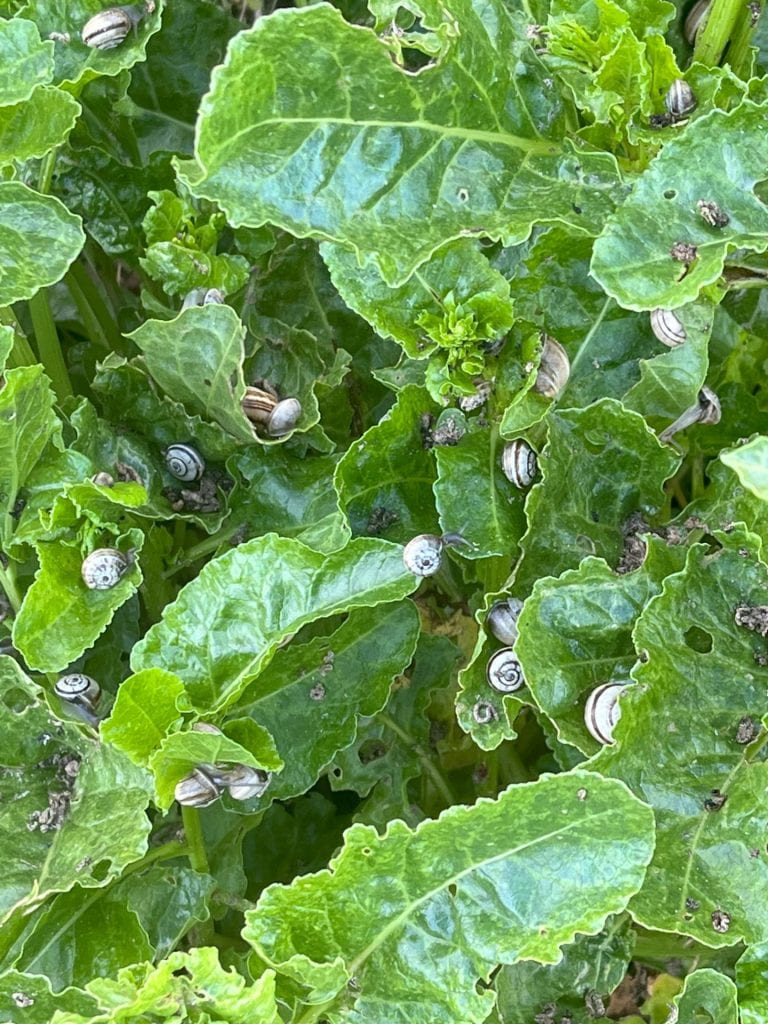
Walking along the sea front this morning I saw this (see picture to the left). It is wild Sea Beet, which you can eat, but look at all those snails having their breakfast.
In fact every single plant along the front looked like this and there are quite a few plants. They grow in the small crack between the pavement and wall and were covered in snails. In this picture they all look like a particular type with their whitish shells and dark spiral line. My money is on these being Striped Snails but I have been known to be wrong before. They are not the same type as the ones I have on my allotment which are the regular brown common garden snail but this wet spring has meant that I have lots of them and as I plant out all my veg, there is a very high possibility that a bit of it will be eaten.
I don’t use any type of chemical to stop the slugs and snails, not even the organic slug pellets, so here is a list of things that you can try to prevent heart break when you discover that all your lovely little carrot seedlings have been eaten away in one night.
- Watch the weather forecast and only plant out when there is a run of days that are not wet. Planting out when you have a few days of rain is asking for it. Below is the forecast for the next few days and it is dry enough to plant out. Even on the day when there is a rain drop, the likelihood of rain is 13% so it is fairly safe.

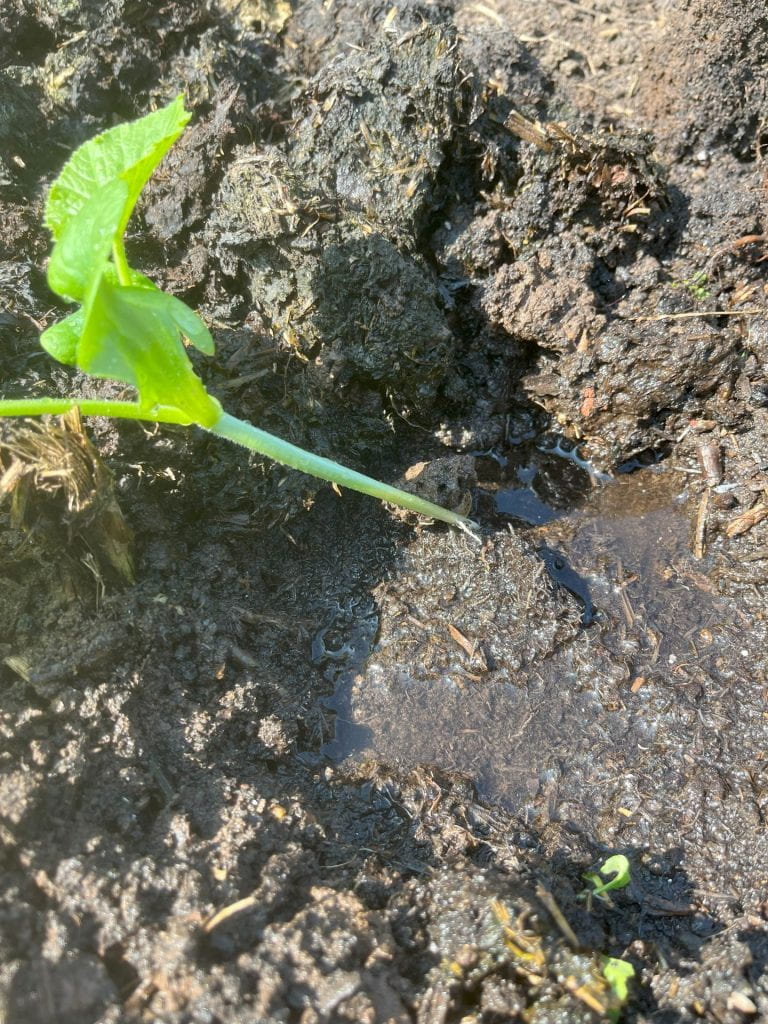
- When planting out your plants, water the hole or row that you are planting into when you put the plant in but before you backfill with the soil.
Here is my Romanesco courgette being watered in. Once the soil has been put back, it doesn’t look as if I have watered it at all. There are two benefits to doing this. One, the compost and roots have the same moisture level as the soil and this encourages the roots to move out and search for the water going down rather than towards the surface. Secondly, the top soil is not damp and therefore does not attract slugs and snails that love a bit of moisture.
Obviously, when I water the plant when it next needs it I will water the surface of the soil but I will use about half a watering can in one go which will soak down and the plant will be a bit bigger and should therefore shrug off a bit of snail attention.
2. However, I do provide a bit of protection for my new plantings.
Sometimes I use copper rings which are supposed to keep slugs and snails off new plantings because it provides some sort of electrical shock when they travel over it. I don’t know if that is true but look at my dahlia shoots with not a bite in sight despite all this rain.
There are other things that you can use to provide a barrier between your plants and things that eat them. A few of my favourites are plastic bottles with the bottoms cut off acting as small green houses. It is just a bit harder for a slug or snail to get in, but not impossible, and it has been known for me to trap a slug or snail in there which then completely eats the plant.
I also use fleece to cover one or two blocks of planting, in particular lettuce, brassicas and onions as can be seen here.
3. After all of this, I then look at the beds surrounding the new plantings. Are they hiding places for the dreaded creatures? Well, in this case yes they are. If beds around have weeds on them, plastic coverings or piles of manure that haven’t been spread yet then slug and snail heaven resides all around. It’s not just weeds – rhubarb is a great hiding place.
On the bed above the planting I had black plastic and bricks and when I removed all of this to let everything dry out, I removed 173 slugs and snails. They were everywhere as was a slow worm but he moved too quickly, go figure, for me to get a photo.
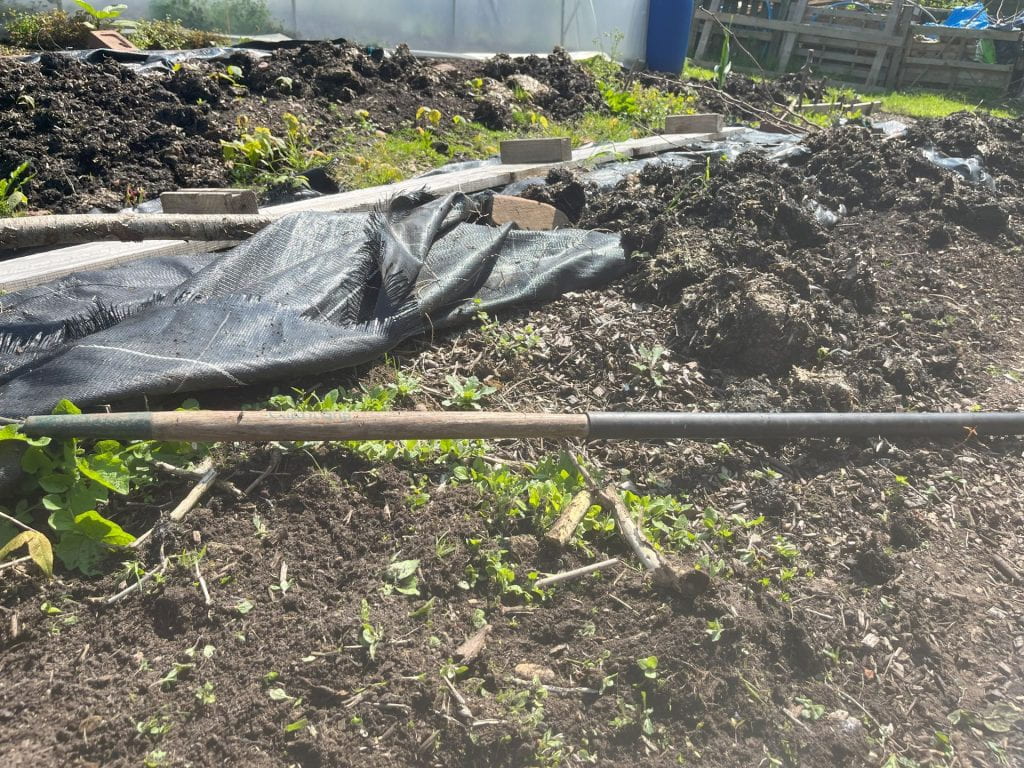
Black plastic, wood and weeds 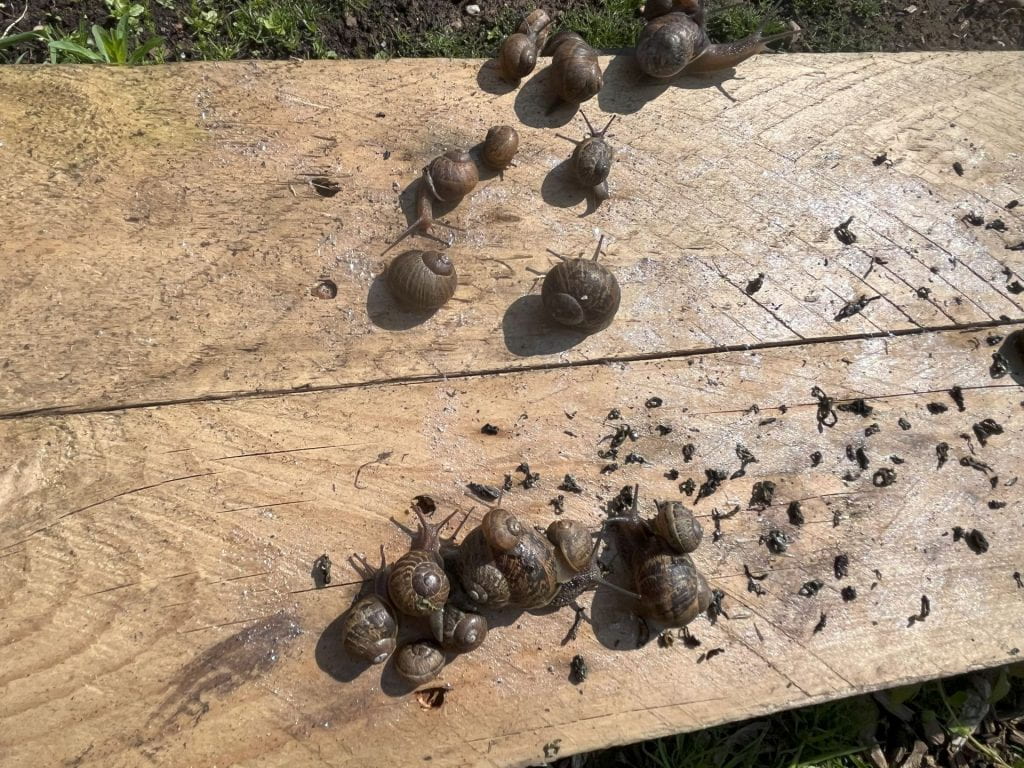
Some of the snails hiding underneath the wood 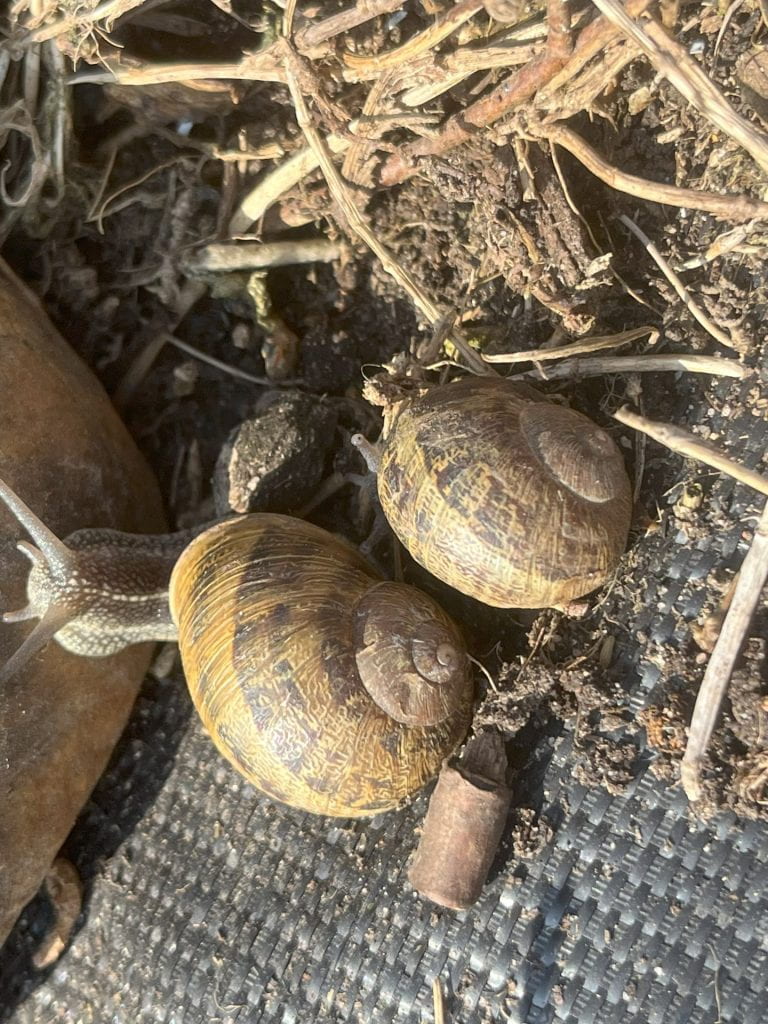
Snails under the folds of the black plastic 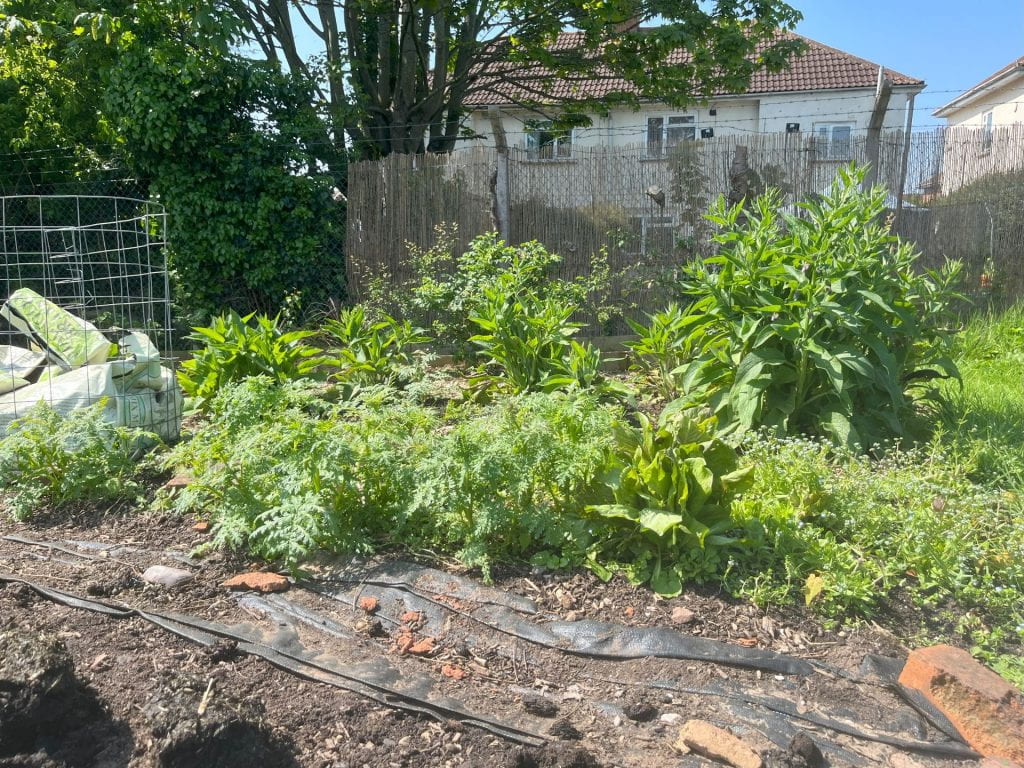
Weeds and plants on the bed behind the new plantings
So, I have weeded both beds, removed the black plastic and bricks and put the wood in its correct position. This should all reduce the places where they can hide. I collected all the slugs and snails up that I could find and dealt with them in my own way. You can place them in your compost bin or somewhere which isn’t on your plot (not your neighbour’s plot though!) but beware that research has shown that snails are homing creatures.
4. I go on hunts for slugs and snails in damp and wet weather. I know where they hide on my plot and which plants will have quite a few in them. I used to have a wonderful hedge of lavender near one of my beds. During a wetter than usual year I couldn’t get any seedlings to survive in the beds nearby even when I had been through and picked all of the slugs and snails out. In the end I had to dig them up and when I did I found hundreds that I hadn’t seen. Lesson learnt! So, learn where the hiding places are on your plot.
5. I sow extra seedlings of everything that I plant out and usually pot them on and keep them until I am sure everything has survived. If things are eaten, I plant new ones out having done a thorough search for where slugs and snails are hiding. Bigger plants are less susceptible to being eaten so they may survive in exactly the same place as the ones that were eaten.
6. There are other things that people swear by such as crushed egg shells, unwashed wool that you sometimes get as packaging, beer traps but all the research suggests that nothing really works. You can also buy nematodes that you water into the soil. This will be an added expense and might be worth it if you are a professional grower. You can encourage frogs and toads by having a pond, offer shelter for slow worms, all of which I have in order to try and provide a balance for nature. However, you need to find the solutions that have some results for you and your plot. They may not be the same as mine but we can all limit the amount of damage done by these pests that the RHS say they get the most questions about.